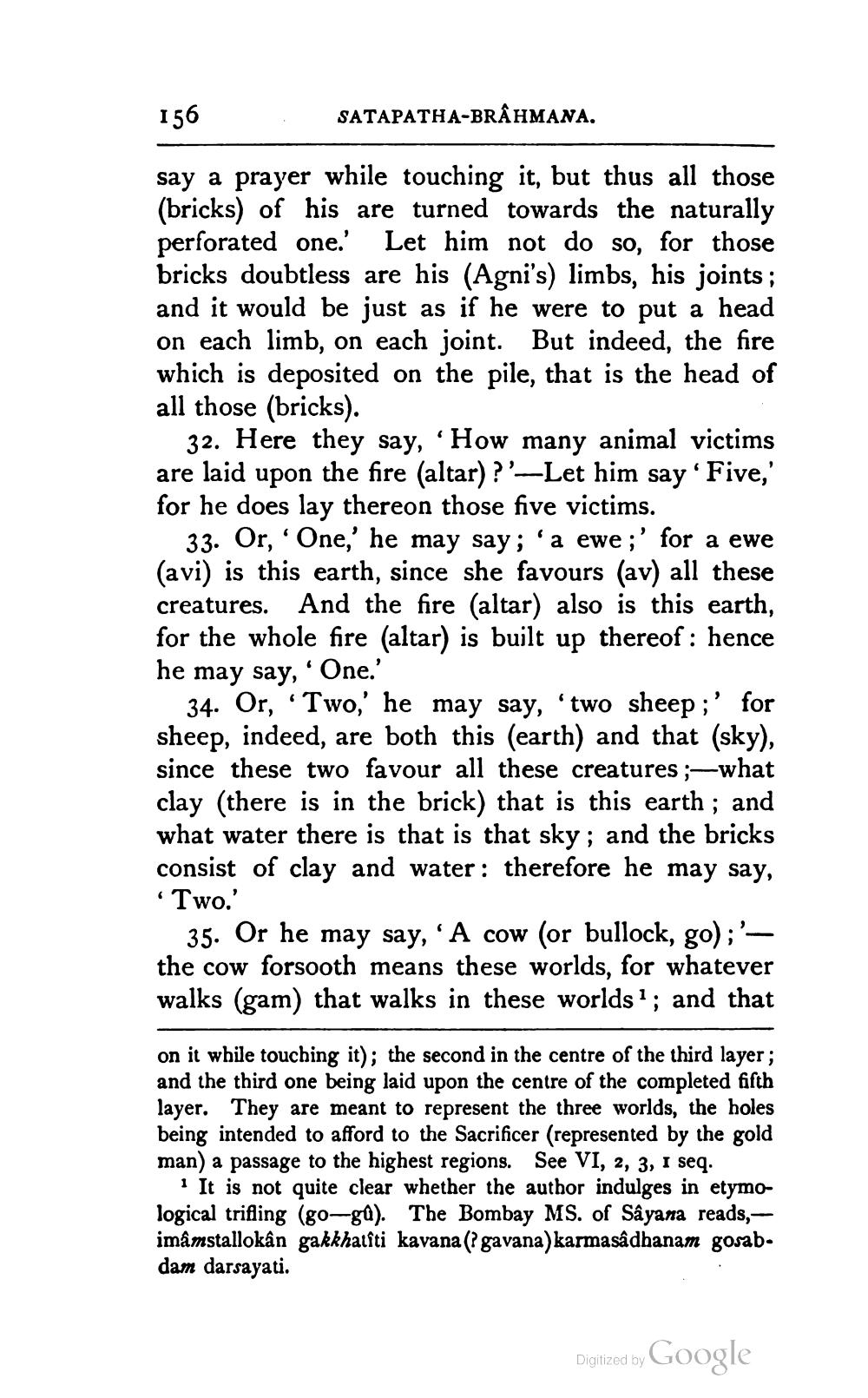________________
156
SATAPATHA-BRAHMANA.
say a prayer while touching it, but thus all those (bricks) of his are turned towards the naturally perforated one.' Let him not do so, for those bricks doubtless are his (Agni's) limbs, his joints; and it would be just as if he were to put a head on each limb, on each joint. But indeed, the fire which is deposited on the pile, that is the head of all those (bricks).
32. Here they say, 'How many animal victims are laid upon the fire (altar)?'-Let him say 'Five,' for he does lay thereon those five victims.
33. Or, 'One,' he may say; 'a ewe;' for a ewe (avi) is this earth, since she favours (av) all these creatures. And the fire (altar) also is this earth, for the whole fire (altar) is built up thereof: hence he may say, ' One.'
"
34. Or, Two,' he may say, 'two sheep;' for sheep, indeed, are both this (earth) and that (sky), since these two favour all these creatures ;-what clay (there is in the brick) that is this earth; and what water there is that is that sky; and the bricks consist of clay and water: therefore he may say, 'Two.'
35. Or he may say, 'A cow (or bullock, go); 'the cow forsooth means these worlds, for whatever walks (gam) that walks in these worlds1; and that
on it while touching it); the second in the centre of the third layer; and the third one being laid upon the centre of the completed fifth layer. They are meant to represent the three worlds, the holes being intended to afford to the Sacrificer (represented by the gold man) a passage to the highest regions. See VI, 2, 3, I seq.
'It is not quite clear whether the author indulges in etymological trifling (go-gû). The Bombay MS. of Sâyana reads,― imâmstallokân gakkhatîti kavana (? gavana) karmasâdhanam gosabdam darsayati.
Digitized by Google




